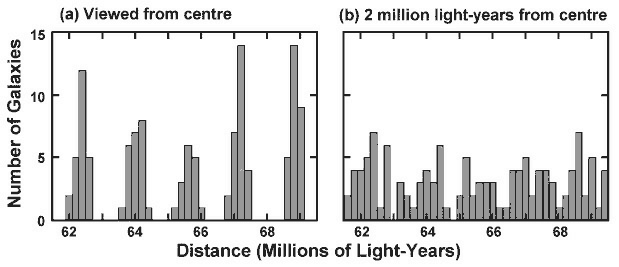I didn't intend to misrepresent Moshe Carmeli, I have no idea if he was a young earth creationist or believed the Earth was the center of the universe.
http://www.conservapedia.com/Moshe_Carmeli
The thing is though, his model of the universe doesn't exclude that possibility.
http://www.conservapedia.com/Cosmological_special_relativity
Since you brought up intuitive assessment, I wonder what your thoughts are on Hubble, who discovered the red shift. The red shift is where the faster objects, such as stars or galaxies, travel, the more the shift in light toward the red end of the spectrum.
In every direction we look in space, there is a
uniform increase in speed radiating from the Earth. It's as if we are at the center of an explosion looking out. The Earth is the center of this redshift map, the green is the slower moving stars and galaxies, the red toward the outer part is moving faster:
If we were not at the center (or near to it), we would not see a uniform shift from green to red, it would be lopsided. After Hubble (atheist) discovered this, here were his thoughts:
"There must be no favoured location in the universe, no centre, no boundary; all must see the universe alike. And, in order to ensure this situation, the cosmologist, postulates spatial isotropy and spatial homogeneity, which is his way of stating that the universe must be pretty much alike everywhere and in all directions."
"Such a condition would imply that we occupy a unique position in the universe, analogous, in a sense, to the ancient conception of a central earth. The hypothesis cannot be disproved but it is unwelcome and would be accepted only as a last resort in order to save the phenomena. Therefore, we disregard this possibility and consider the alternative, namely, a distribution which thins out with distance."
"But the unwelcome supposition of a favoured location must be avoided at all costs."
"Such a favoured position, of course, is intolerable"
"Therefore, in order to restore homogeneity, and to escape the horror of a unique position, the departures from uniformity, which are introduced by the recession factors, must be compensated by the second term representing effects of spatial curvature"
Intolerable? Horror of a unique position? To an atheist
yes, but not to a theist.





 )
)